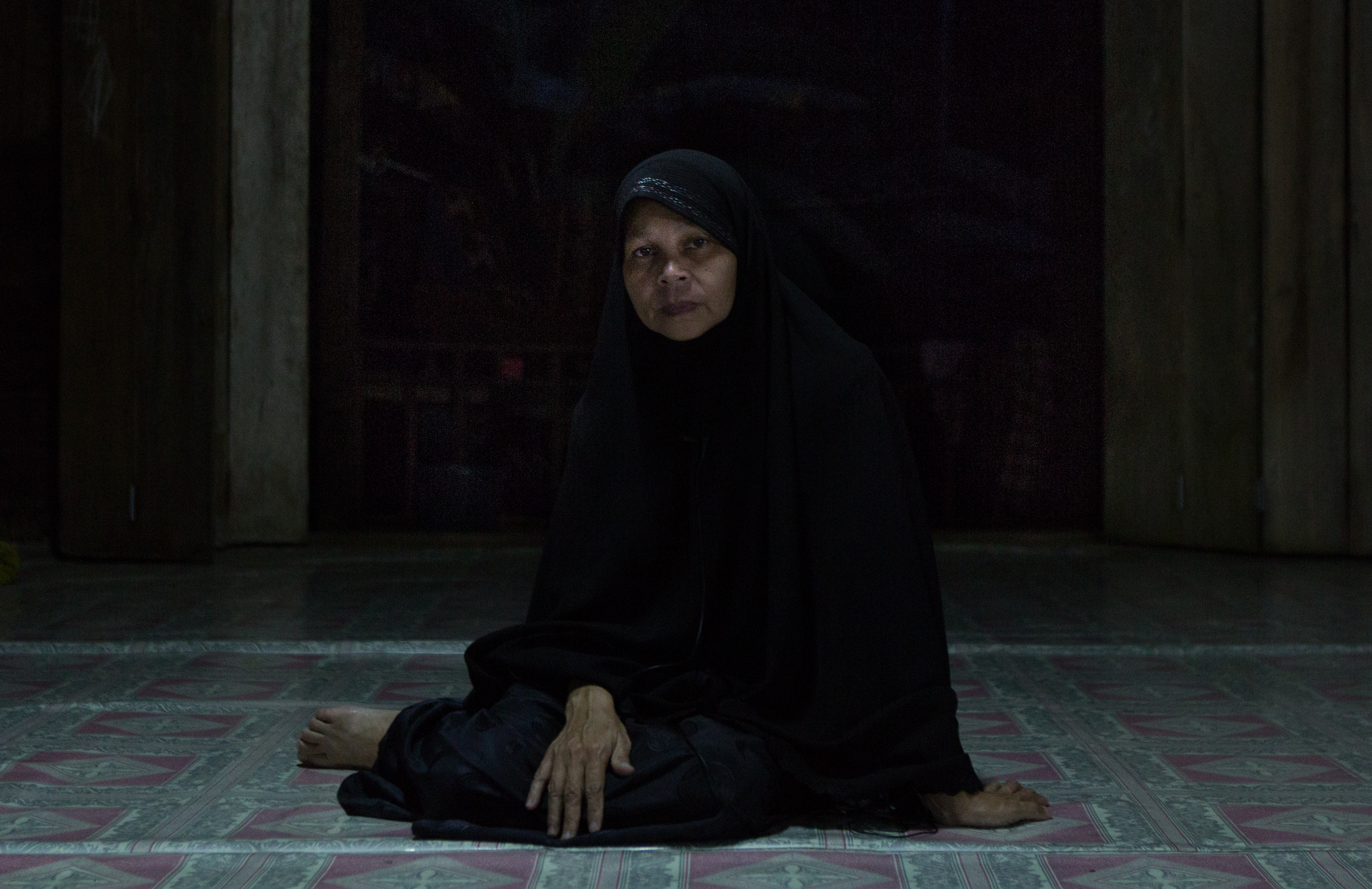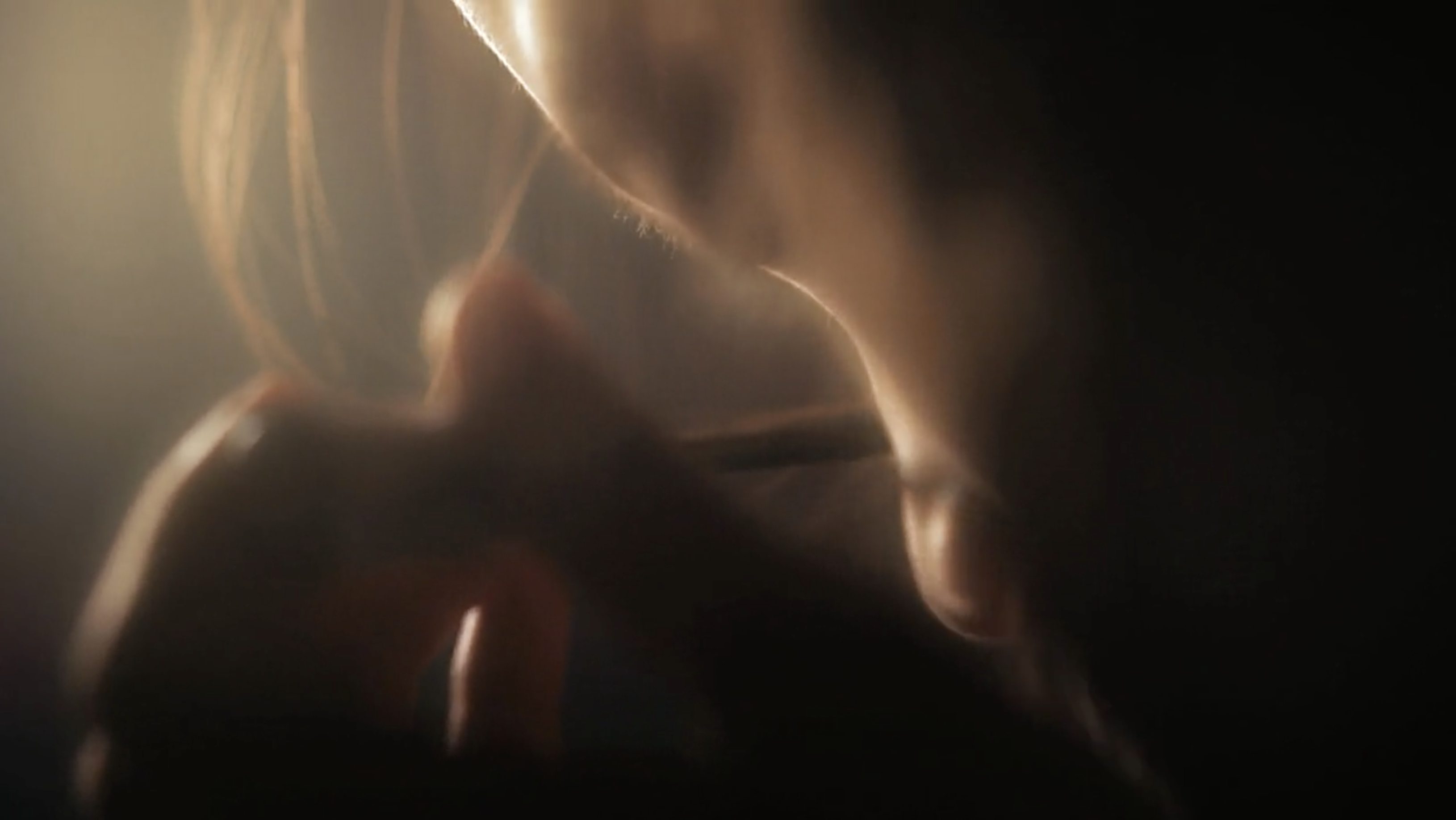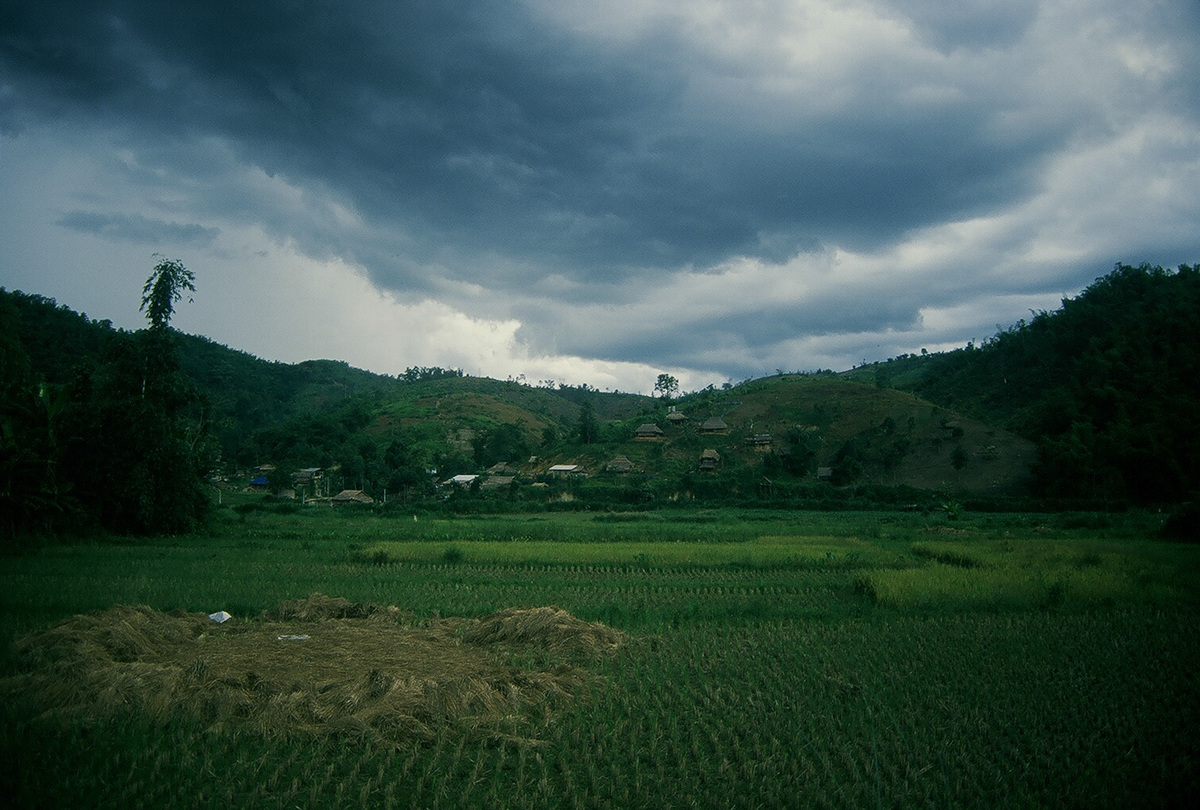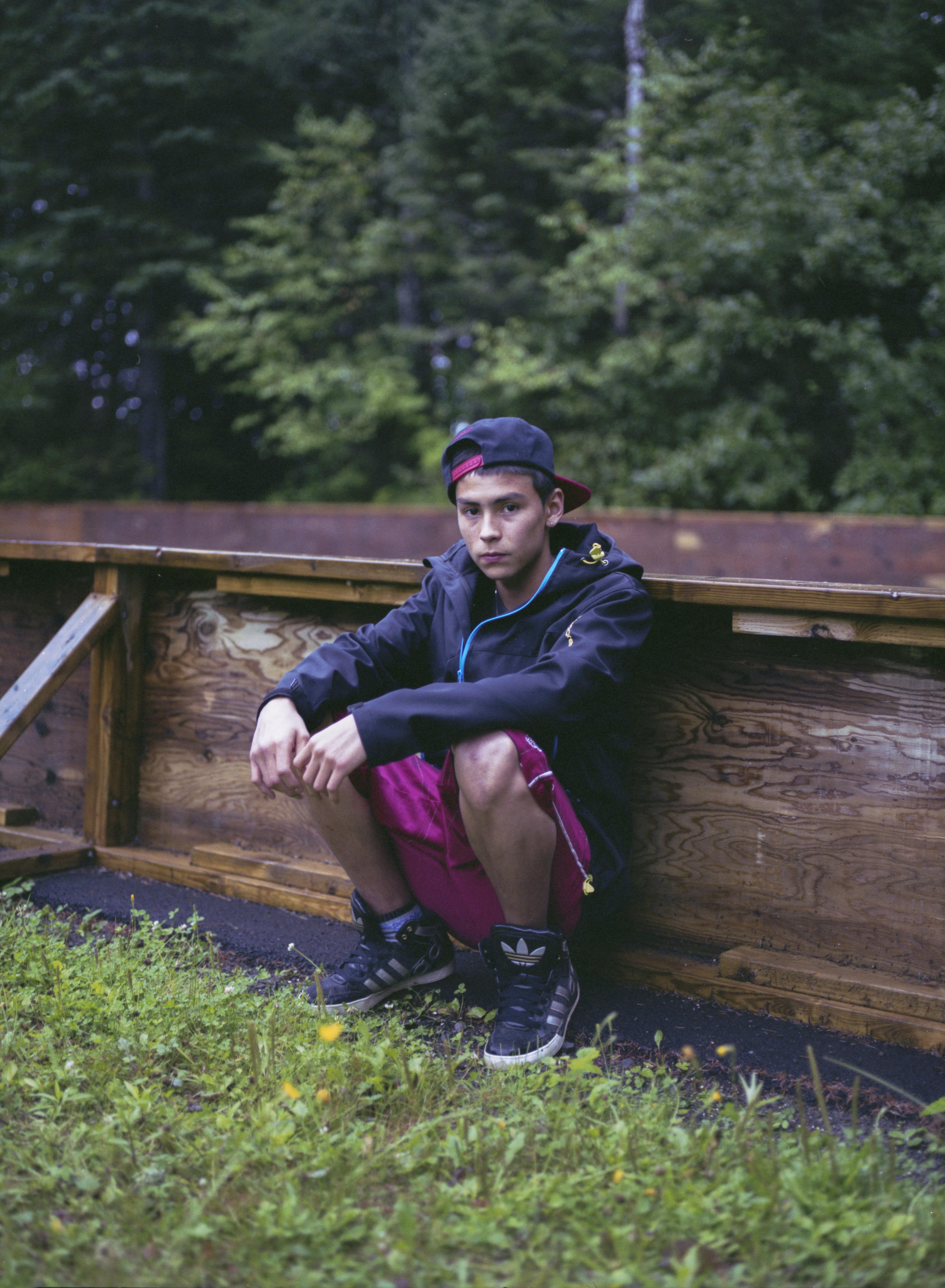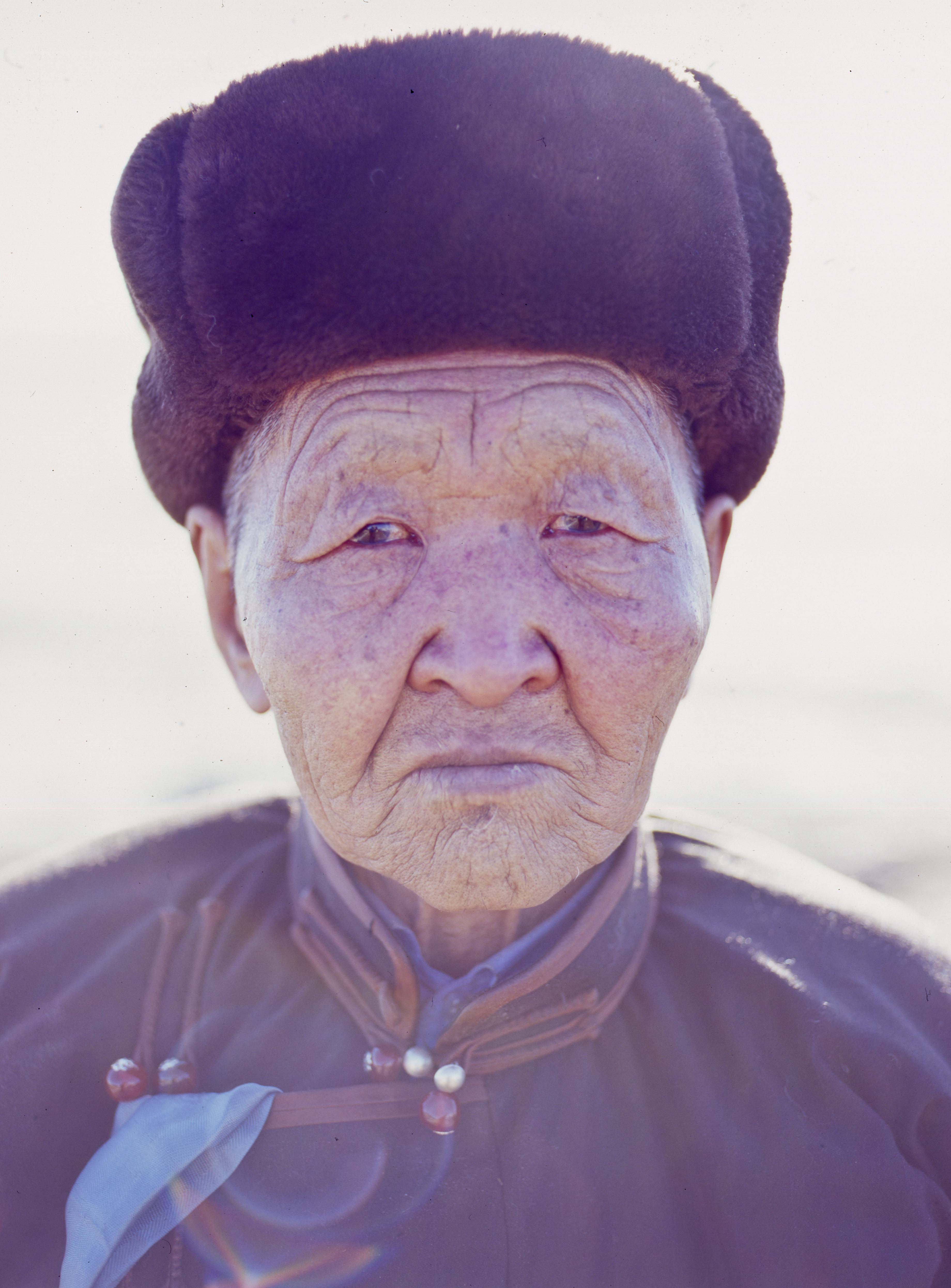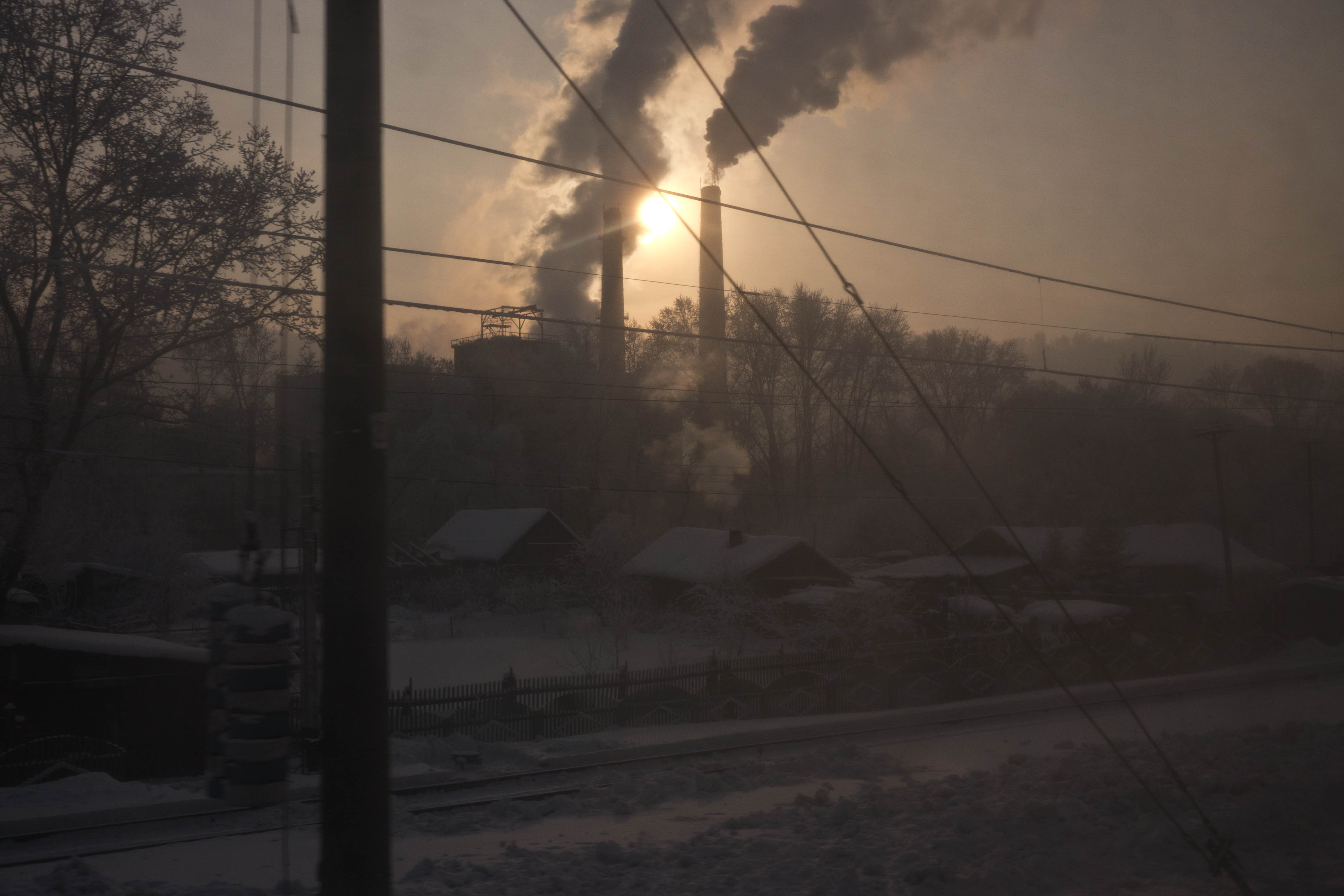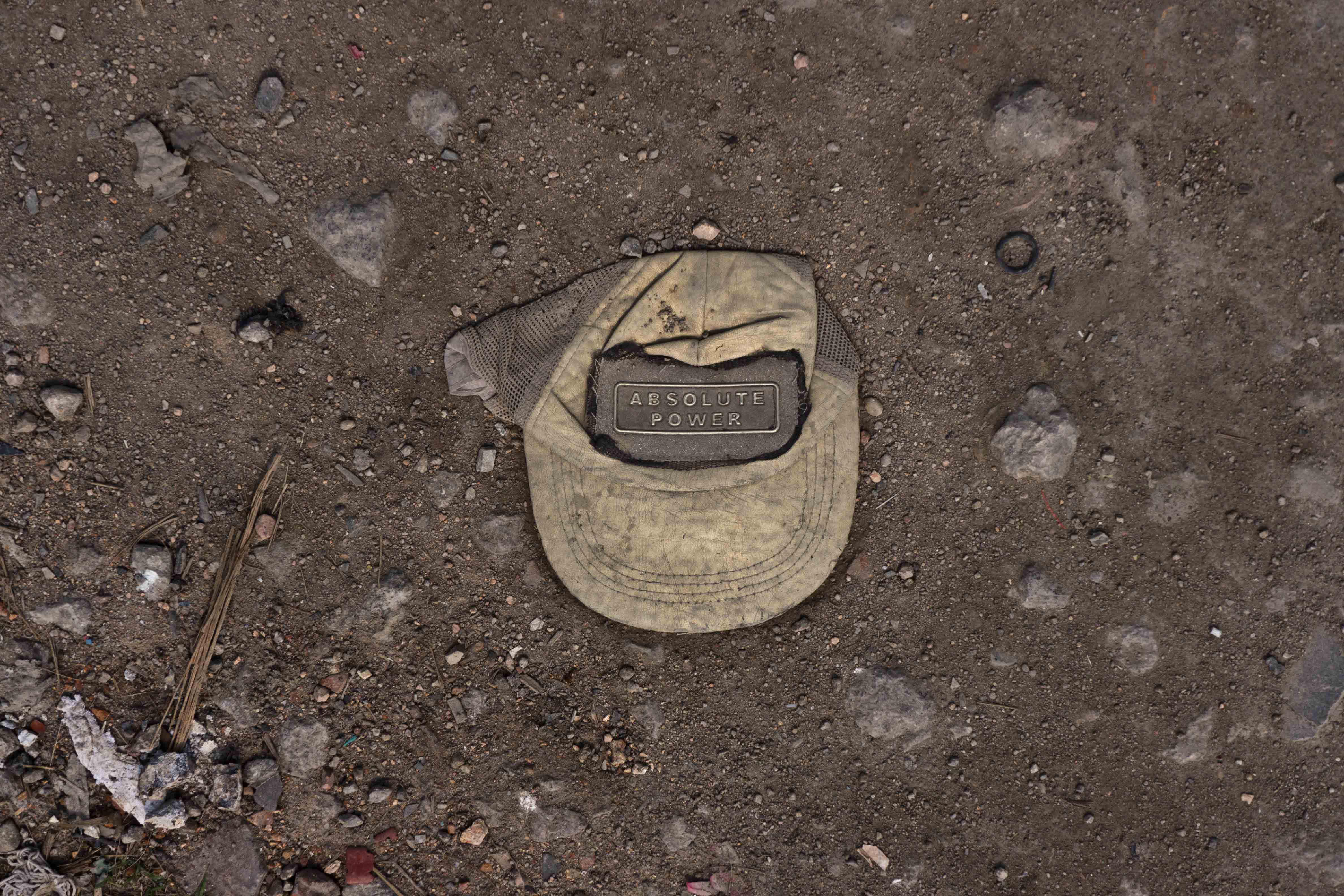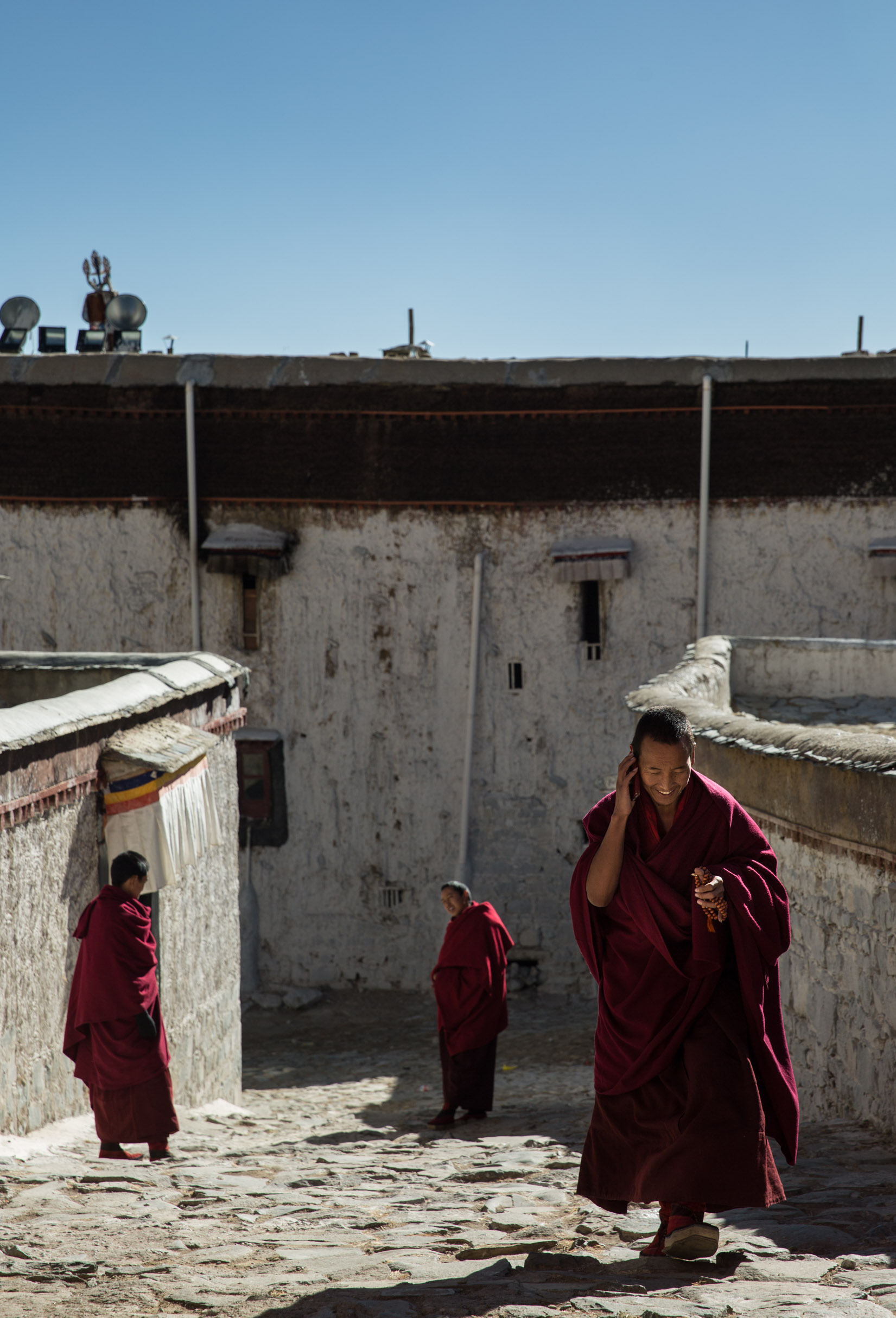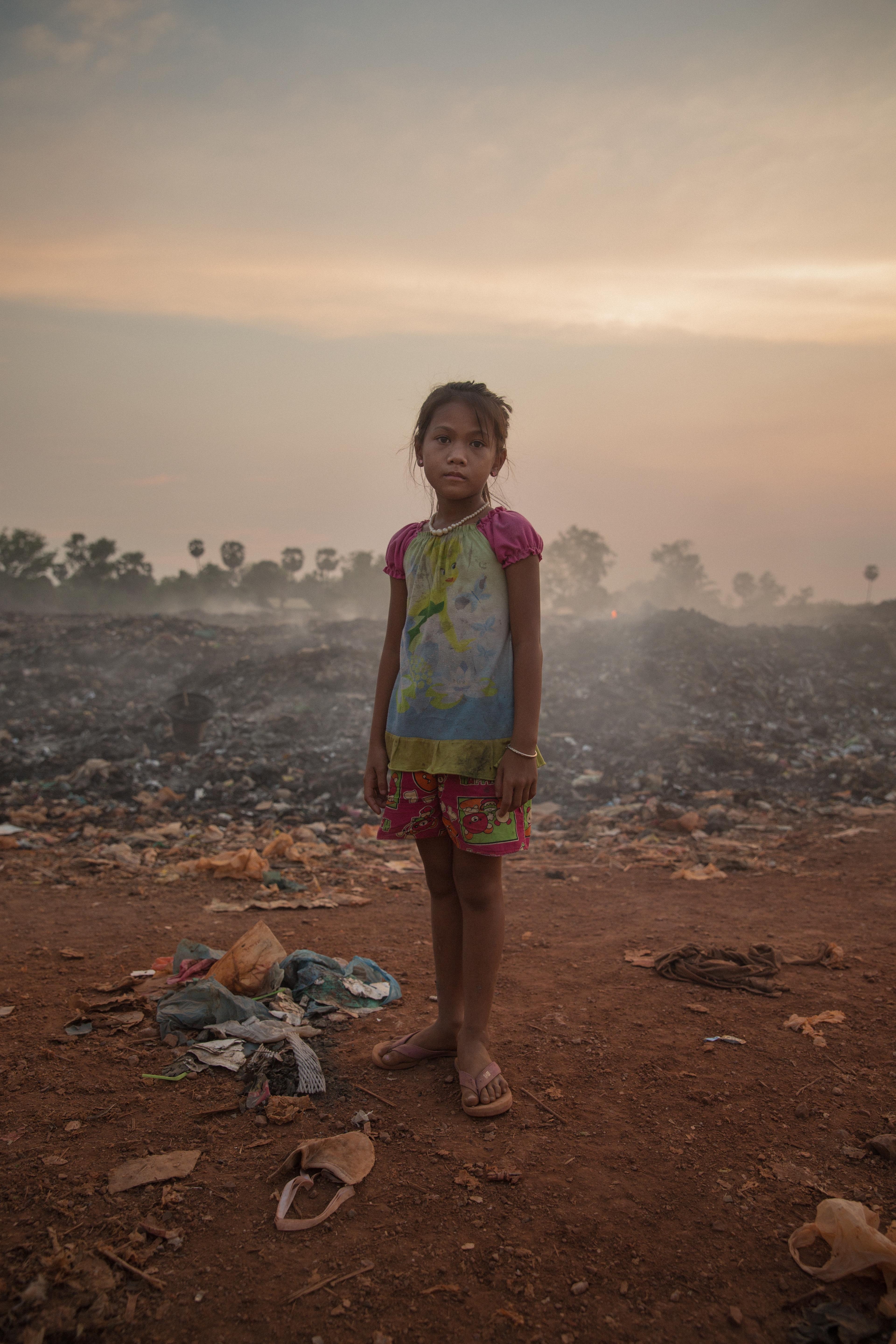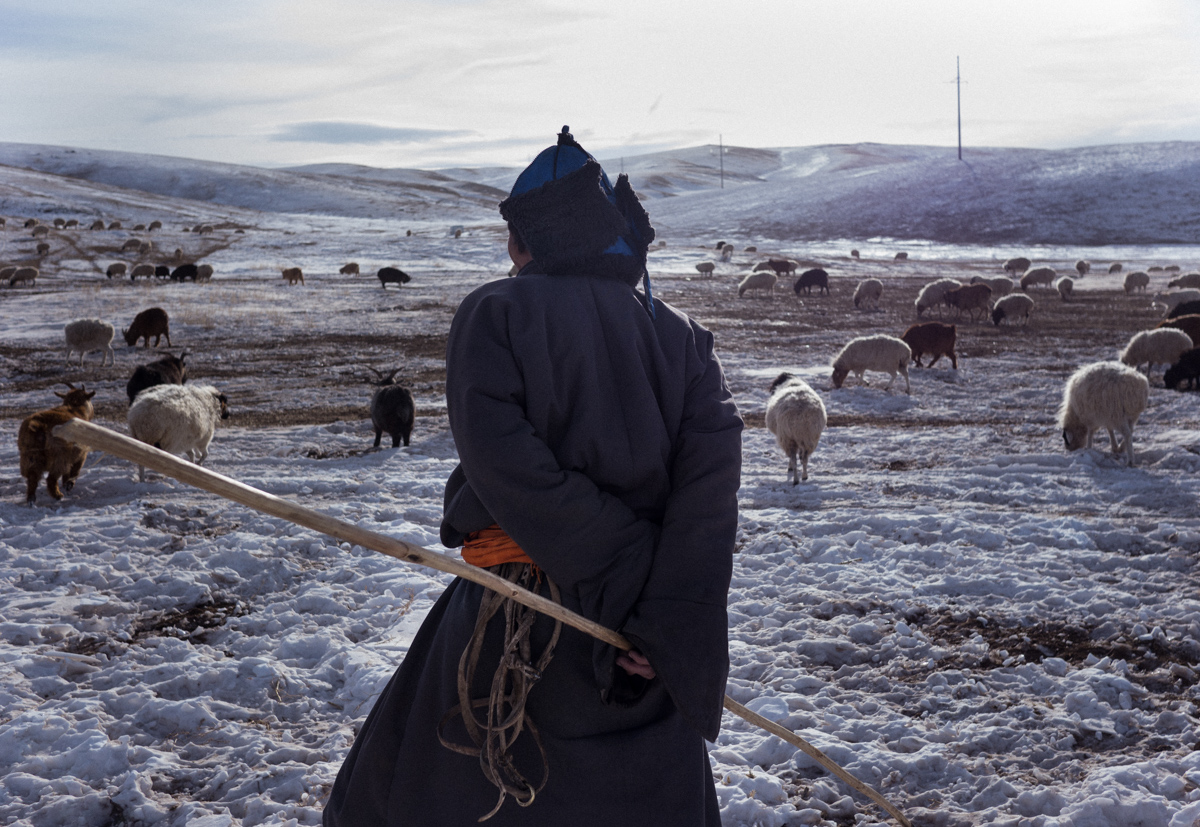
After We Fled
Year: 2018
Location: Balukhali refugee camp, Cox’s Bazaar, Bangladesh
Camera / Format: Sony a7r III
Home to over 590,000 Rohingya who in August 2017 fled ethnic violence and persecution in neighbouring Myanmar, the Kutupalong-Balukhali expansion site is now the world’s largest refugee camp.

A lone Banyan
tree stands in Balukhali refugee camp, an area that was once farmland and rice
patties but is now home to almost 600,000 Rohingya refugees that fled ethnic
violence in neighbouring Myanmar. According to Burmese media, 90% of the
Rohingya population have left the country. July 30, 2018.
![Rohingya women and children wait for their check-ups at a World Vision-run nutrition center in Balukhali refugee camp, Cox’s Bazar district, Bangladesh, on July 30, 2018. With malnutrition still rampant among the refugee population, U.N. agencies and NGOs must distribute approximately 12,200 tons of food supplies each month to almost 900,000 Rohingya spread out over 34 camps.]()
Rohingya women and children wait for their check-ups at a World Vision-run nutrition center in Balukhali refugee camp, Cox’s Bazar district, Bangladesh, on July 30, 2018. With malnutrition still rampant among the refugee population, U.N. agencies and NGOs must distribute approximately 12,200 tons of food supplies each month to almost 900,000 Rohingya spread out over 34 camps.
![A group of Rohingya men carry supplies back from a nearby distribution center in the Kutupalong-Balukhali expansion site, Cox’s Bazar, Bangladesh on July 29, 2018. Every two weeks, food distribution centers - run by agencies like the World Food Program or the Red Crescent - provide pulses (beans), rice, cooking oil and other rations to registered households. With most employment opportunities in the camps being NGO-funded, daywork and low-income, the majority of Rohingya depend on these provisions to survive. Balukhali camp’s population reaching almost 600,000, one runs into men, women and children carrying provisions such as these every few hundred meters, all day, every day.]()
A group of Rohingya men carry supplies back from a nearby distribution center
in the Kutupalong-Balukhali expansion site, Cox’s Bazar, Bangladesh on July 29, 2018.
Every two weeks,
food distribution centers - run by agencies like the World Food Program or the
Red Crescent - provide pulses (beans), rice, cooking oil and other rations to
registered households. With most employment opportunities in the camps being
NGO-funded, daywork and low-income, the majority of Rohingya depend on
provisions to survive. Balukhali camp’s
population reaching almost 600,000, one runs into men, women and children
carrying these every few hundred meters, all day, every day.
![A Rohingya man collects firewood in the bush several kilometers outside of Balukhali refugee camp, in Cox’s Bazar, Bangladesh. August 11, 2018.]()
A Rohingya man collects firewood in the bush several kilometers outside of Balukhali refugee camp,
in Cox’s Bazar, Bangladesh. August 11, 2018.
![Two Rohingya girls stare out at Kutupalong-Balukhali megacamp in Cox’s Bazar, Bangladesh, on July 29, 2018.]()
Two Rohingya girls stare out at Kutupalong-Balukhali megacamp in Cox’s Bazar, Bangladesh, on July 29, 2018.
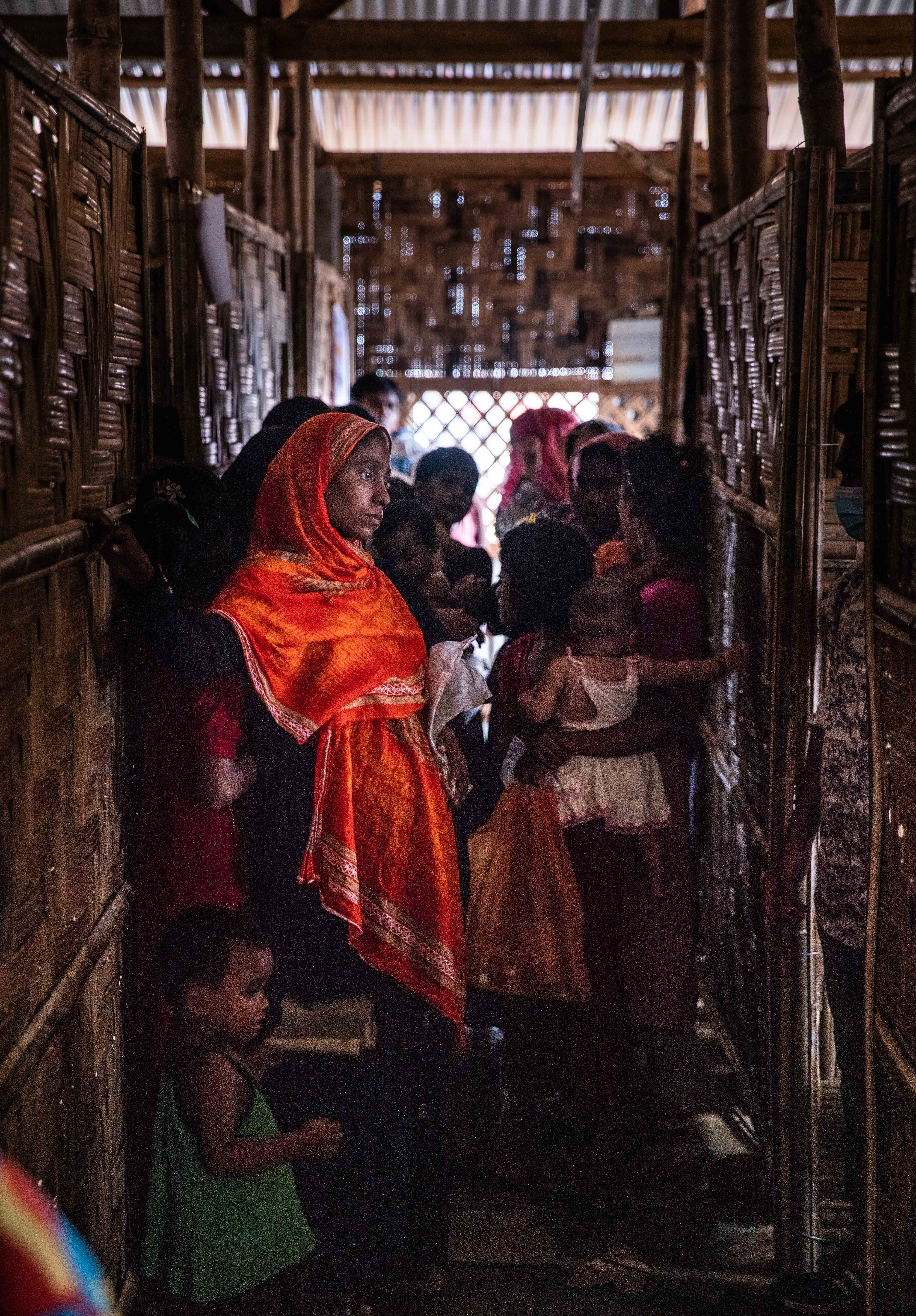
Rohingya women and children wait for their check-ups at a World Vision-run nutrition center in Balukhali refugee camp, Cox’s Bazar district, Bangladesh, on July 30, 2018. With malnutrition still rampant among the refugee population, U.N. agencies and NGOs must distribute approximately 12,200 tons of food supplies each month to almost 900,000 Rohingya spread out over 34 camps.
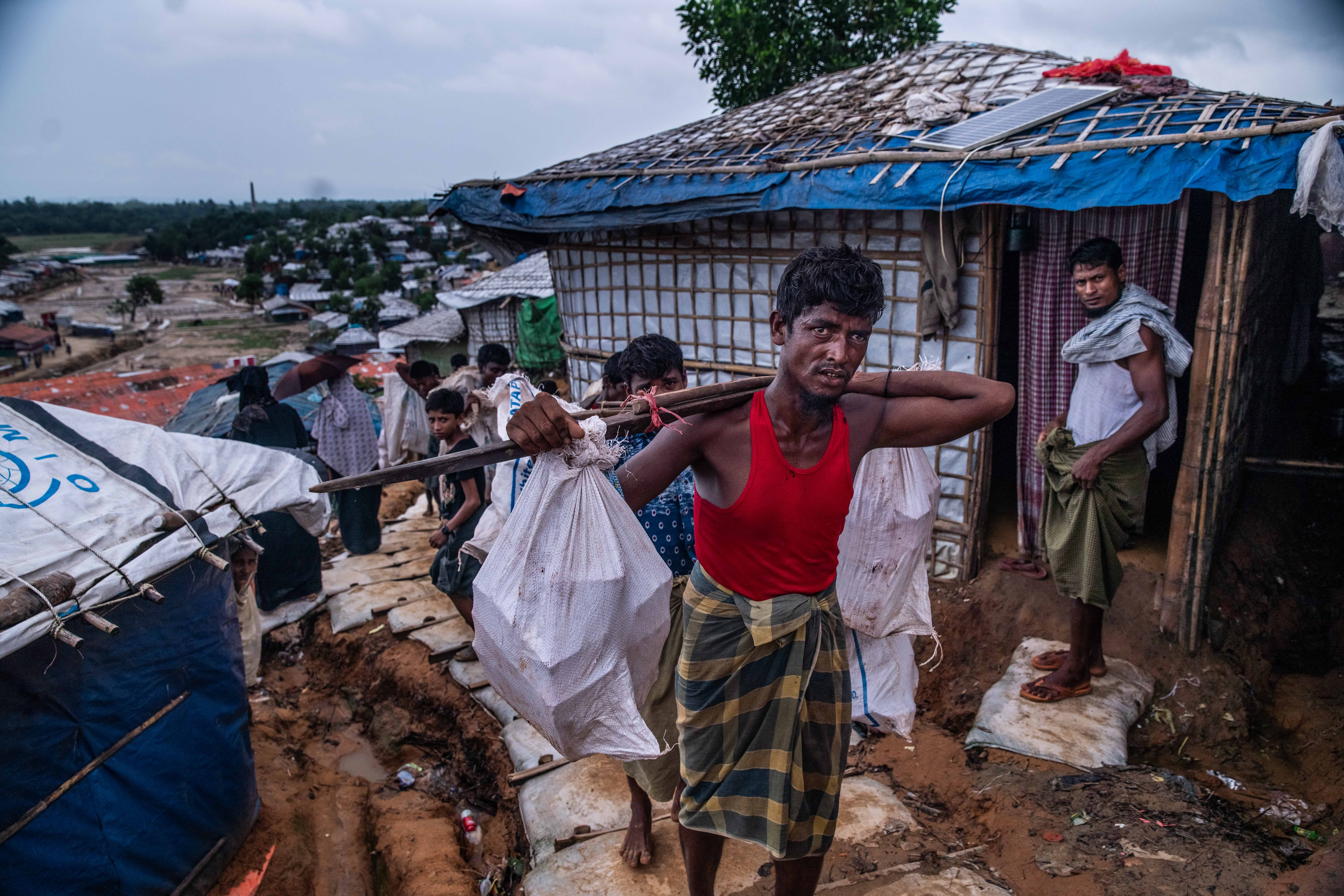
A group of Rohingya men carry supplies back from a nearby distribution center
in the Kutupalong-Balukhali expansion site, Cox’s Bazar, Bangladesh on July 29, 2018.
Every two weeks,
food distribution centers - run by agencies like the World Food Program or the
Red Crescent - provide pulses (beans), rice, cooking oil and other rations to
registered households. With most employment opportunities in the camps being
NGO-funded, daywork and low-income, the majority of Rohingya depend on
provisions to survive. Balukhali camp’s
population reaching almost 600,000, one runs into men, women and children
carrying these every few hundred meters, all day, every day.

A Rohingya man collects firewood in the bush several kilometers outside of Balukhali refugee camp,
in Cox’s Bazar, Bangladesh. August 11, 2018.
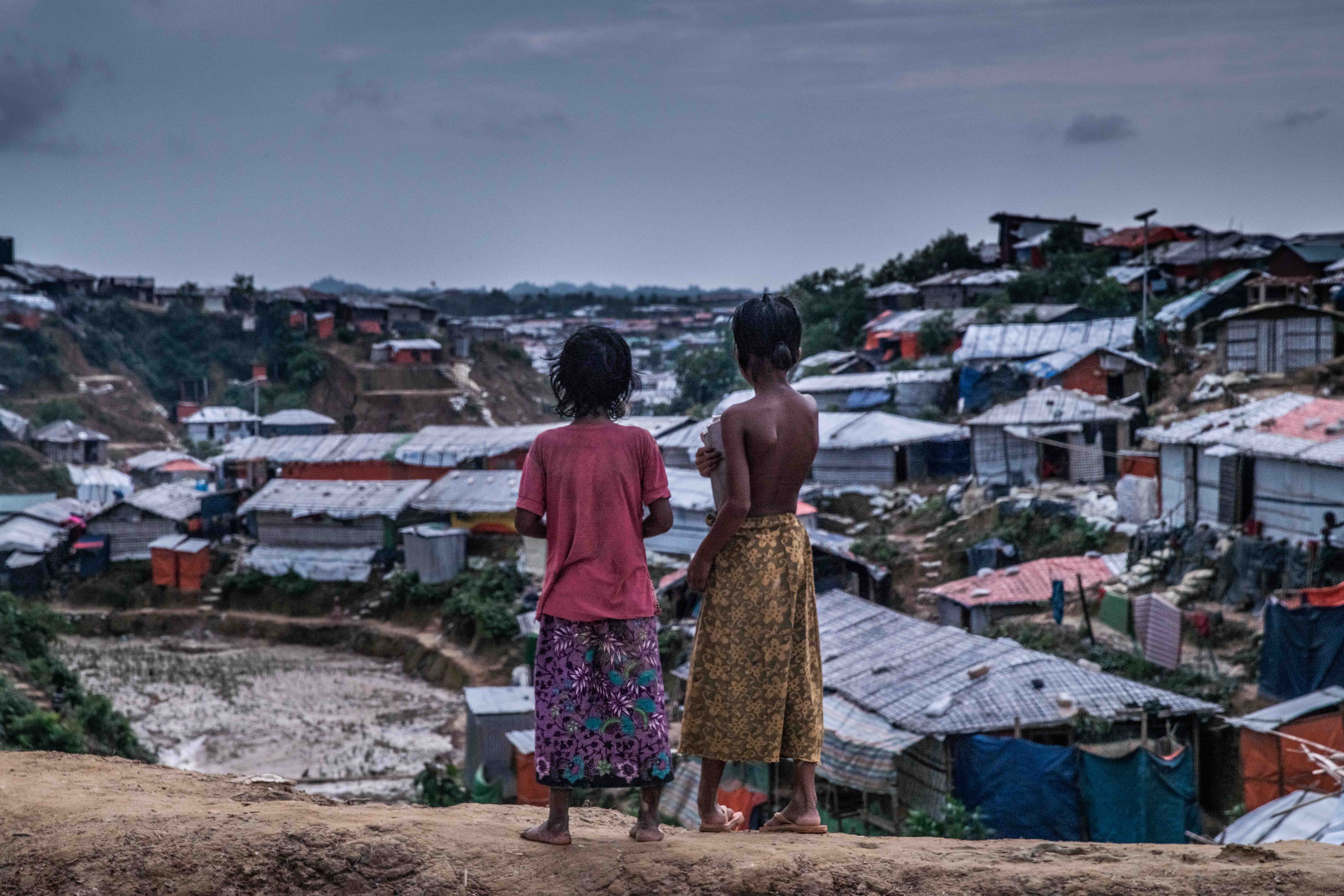
Two Rohingya girls stare out at Kutupalong-Balukhali megacamp in Cox’s Bazar, Bangladesh, on July 29, 2018.
Walking through
the camps, it’s hard not to notice the overwhelming amount of children
wandering outside. In October 2017, months after the mass migration of
nearly 700,000 Rohingya from Myanmar, it was estimated that 60% of
refugees were children. Today, according to UNICEF, only 120,000 out
of over 500,000 Rohingya children living in the refugee camps have
access to temporary education centers.
 A Rohingya boy shows his prized possession
from Myanmar: a postcard of Burmese fashion models - often included with
rice bags or food supplies. Apparently, he carries it with him almost
everywhere.
A Rohingya boy shows his prized possession
from Myanmar: a postcard of Burmese fashion models - often included with
rice bags or food supplies. Apparently, he carries it with him almost
everywhere. 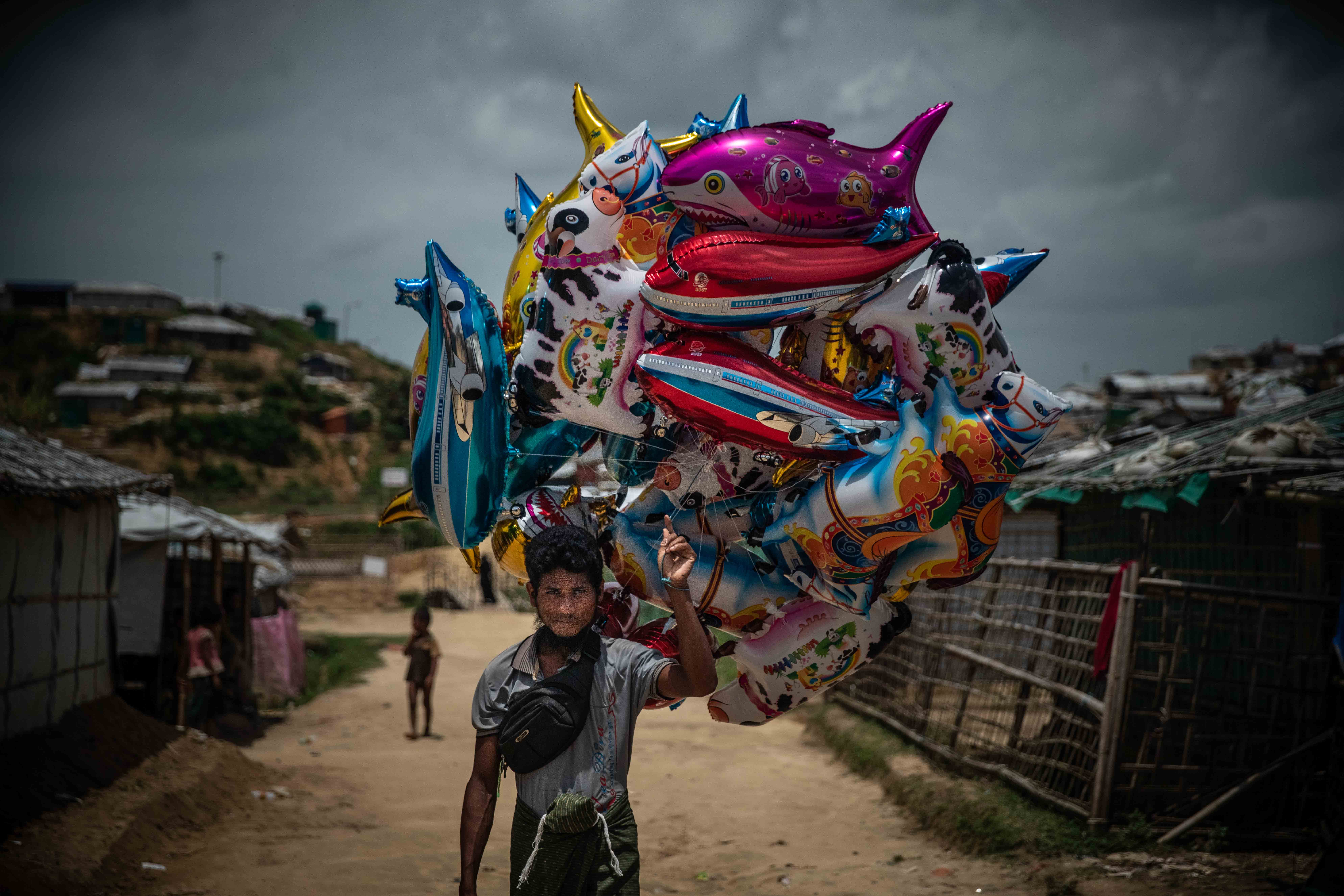 A Rohingya
balloon vendor walks the alleys deep in Balukhali camp, Cox’s Bazar, Bangladesh
on August 8, 2018.
A Rohingya
balloon vendor walks the alleys deep in Balukhali camp, Cox’s Bazar, Bangladesh
on August 8, 2018.
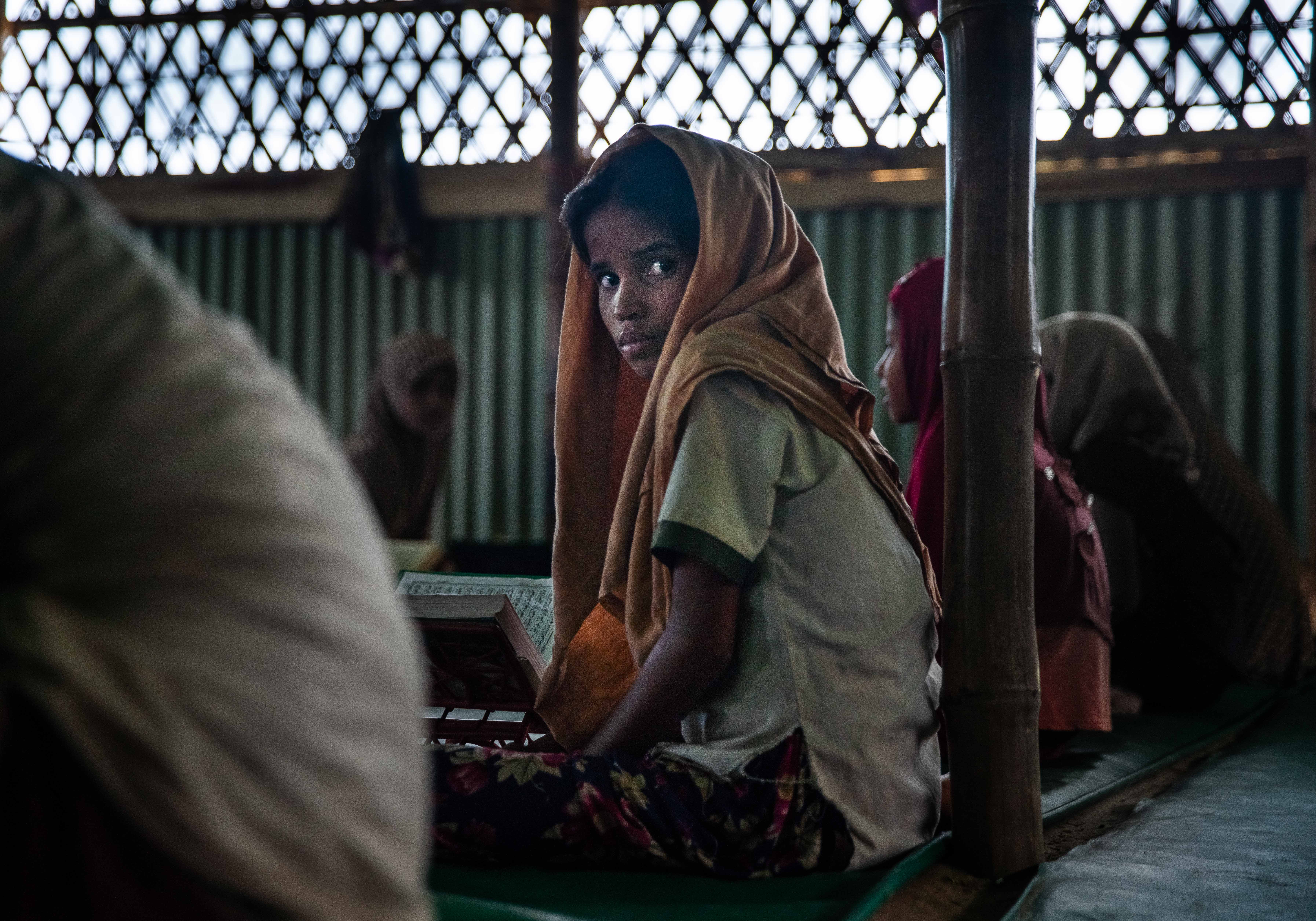
A young Rohingya girl reads the Quran during her daily islamic education at one of Balukhali refugee camp’s
many ‘maktabs’ - religious schools - in Cox’s Bazar, Bangladesh on August 8, 2018.

A young Rohingya man works at a Bangladeshi bamboo plantation near Kutupalong refugee camp in Cox’s Bazar, Bangladesh on August 9, 2018. Though travel outside the camps is restricted for Rohingya refugees, some are hired as temporary workers by businesses nearby.

A Rohingya boy returns from the wilderness outside the Kutupalong-Balukhali expansion site after collecting firewood on August 11, 2018 in Cox’s Bazar district, Bangladesh.
It’s not unusual
to see barefoot children return home with bundles of wood the size of their
bodies. The trek to the cutting areas is long, difficult and dangerous, even
for adults; winding paths cross many ravines and streams, do not feature any
kinds of shelter from the sun or rain and reach out up to 7 kilometers outside
of camp.


A group of
Rohingya men return from cutting firewood in the wilderness outside
the Kutupalong-Balukhali expansion site in Cox’s Bazar, Bangladesh, on August 11, 2018.
the Kutupalong-Balukhali expansion site in Cox’s Bazar, Bangladesh, on August 11, 2018.
To curb the
environmental impact of hundreds of thousands of refugees deforesting the local
bush, the International Organization for MIgration and Food and Agriculture
Organization have begun a land rehabilitation project that has planted over
700,000 grass cuttings and 45,000 trees in the last two weeks of September
alone.
Not only will
these trees help replenish the local ecosystem, but their roots will help
anchor the currently unstable soil from the hills - susceptible to mudslides,
especially during the monsoon - where the camps are built. The project is also
part of IOM’s cash-for-work programs that help provide income to refugees.

Newborn Shamsida is cradled by her grandmother Juhura less than 24 hours after her birth in Balukhali refugee camp,
Cox’s Bazar, Bangladesh, on July 28, 2018. According to UNICEF, around 60 babies are born every day
in the Rohingya refugee camps, with estimates suggesting that only 18 per cent of deliveries occur in health centers.

Kutupalong-Balukhali expansion site during Bangladesh’s monsoon season on July 28, 2018.
Heavy rains are a constant threat for the megacamp’s population, as the hilly unanchored landscape is prone to mudslides. According to a September report by the Inter Sector Coordination Group (ISCG), the last monsoon resulted in three deaths, 46 injuries and over 6,000 displaced people - out of 51,000 affected - between May and September 2018.

Rohingya boys play football in a barren section of Balukhali refugee camp, in Cox’s Bazar, Bangladesh on August 8, 2018. According to a September 2018 joint study by the United Nations Development Programme and the Bangladeshi Ministry of Environment, Forests and Climate Change, over 4,300 acres of hills and forests in the Balukhali and Teknaf area have been stripped to make shelters or collect firewood. Hills stripped of roots and vegetation have resulted in frequent landslides this past Monsoon season, killing at least three people and leaving many others homeless.
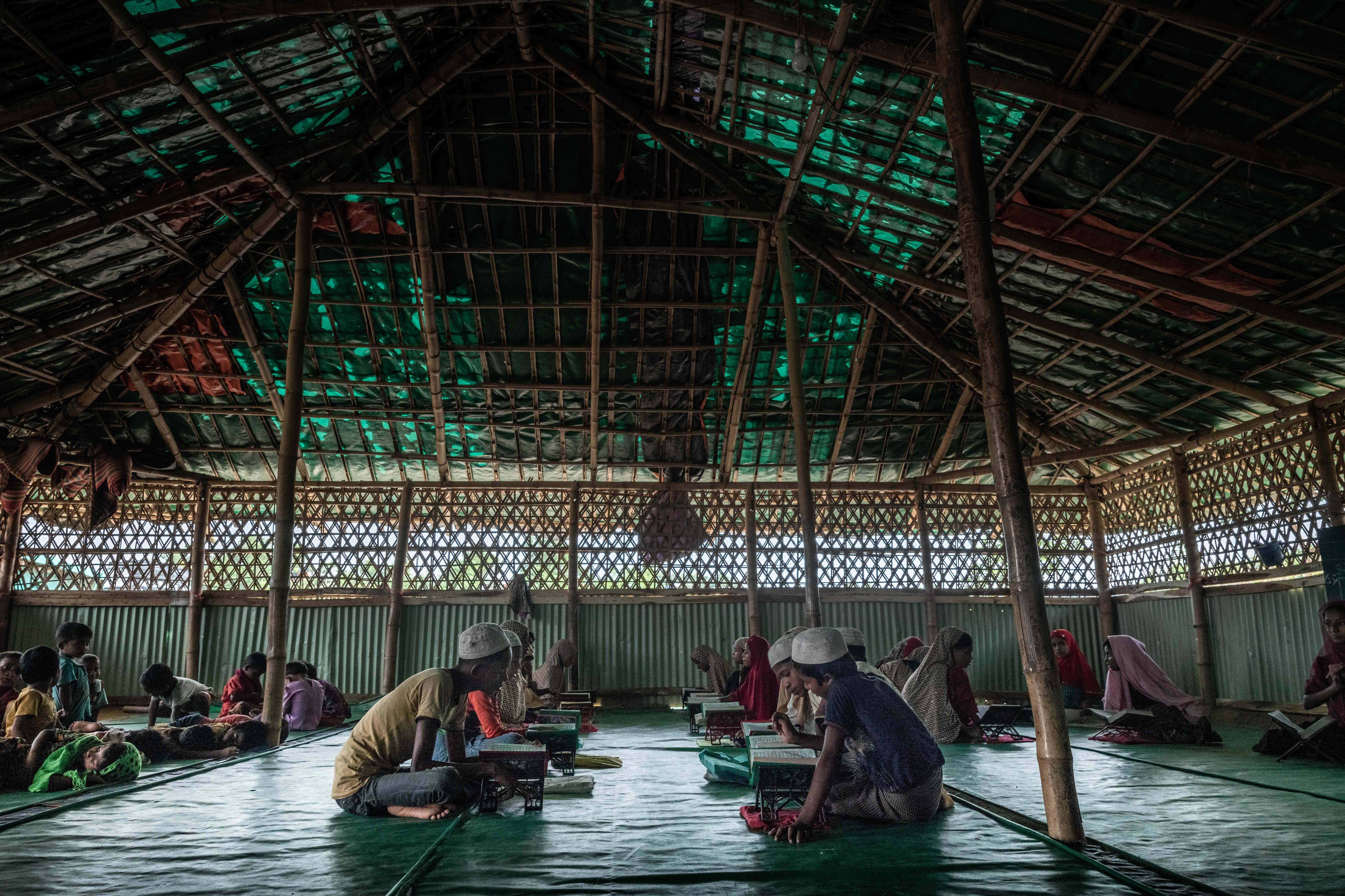
Rohingya children recite the Quran at one of Balukhali refugee camp’s many makeshift mosques in Cox’s Bazar, Bangladesh on August 8, 2018. With no formal schools in the camps, the only education many Rohingya children receive are from temporary learning centers and ‘maktabs’, religious schools teaching Arabic and Quranic education.

Rohingya boys pick firewood in the bush several kilometers away from Balukhali refugee camp on August 11, 2018. Every day, thousands of men, women and children travel hours through the wilderness to collect wood for cooking. With approximately 700 metric tons of firewood being collected every day, estimates place complete deforestation of the area by the end of 2019. Now, U.N. agencies and NGOs are working to distribute gas stoves and provide training to curb the environmental impact.
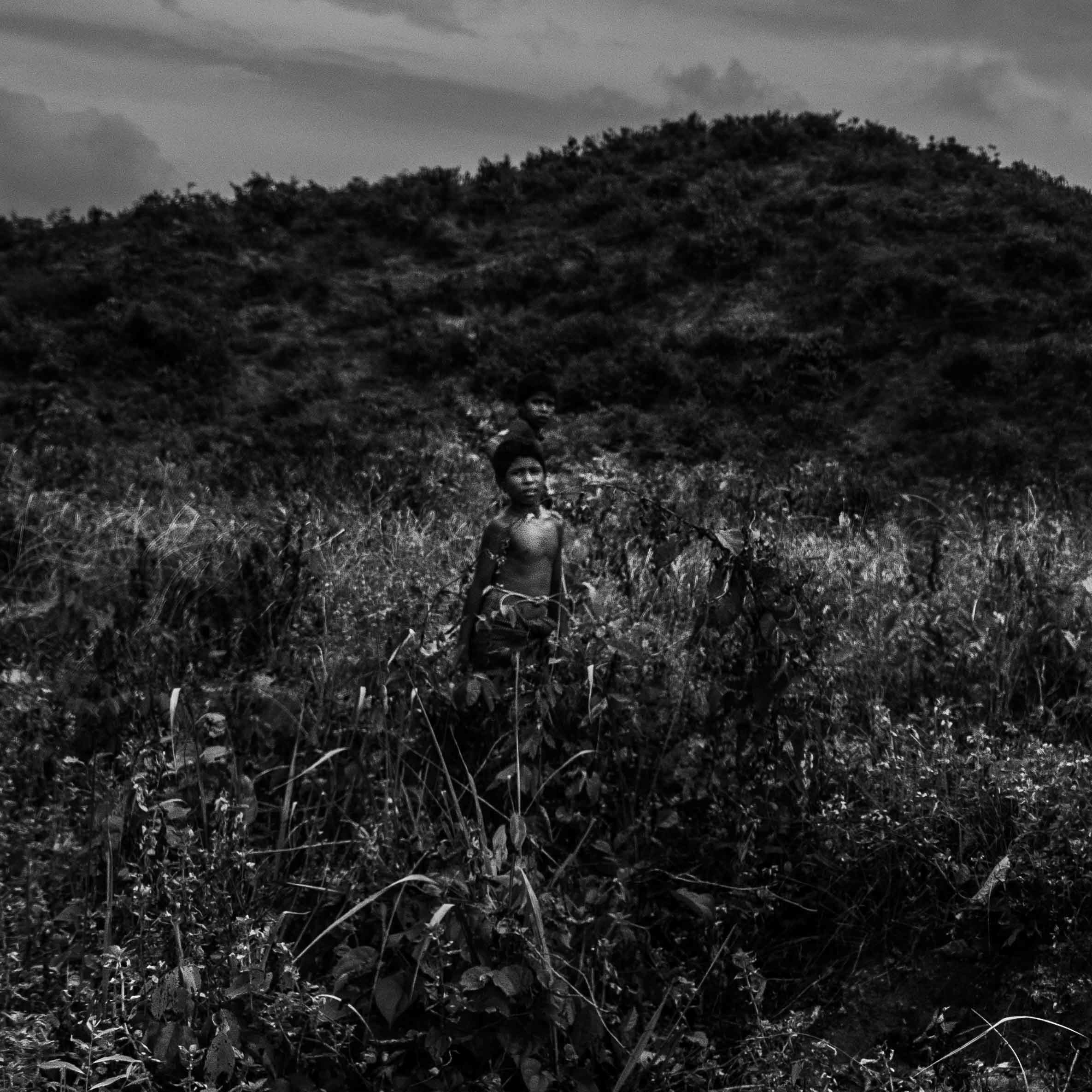
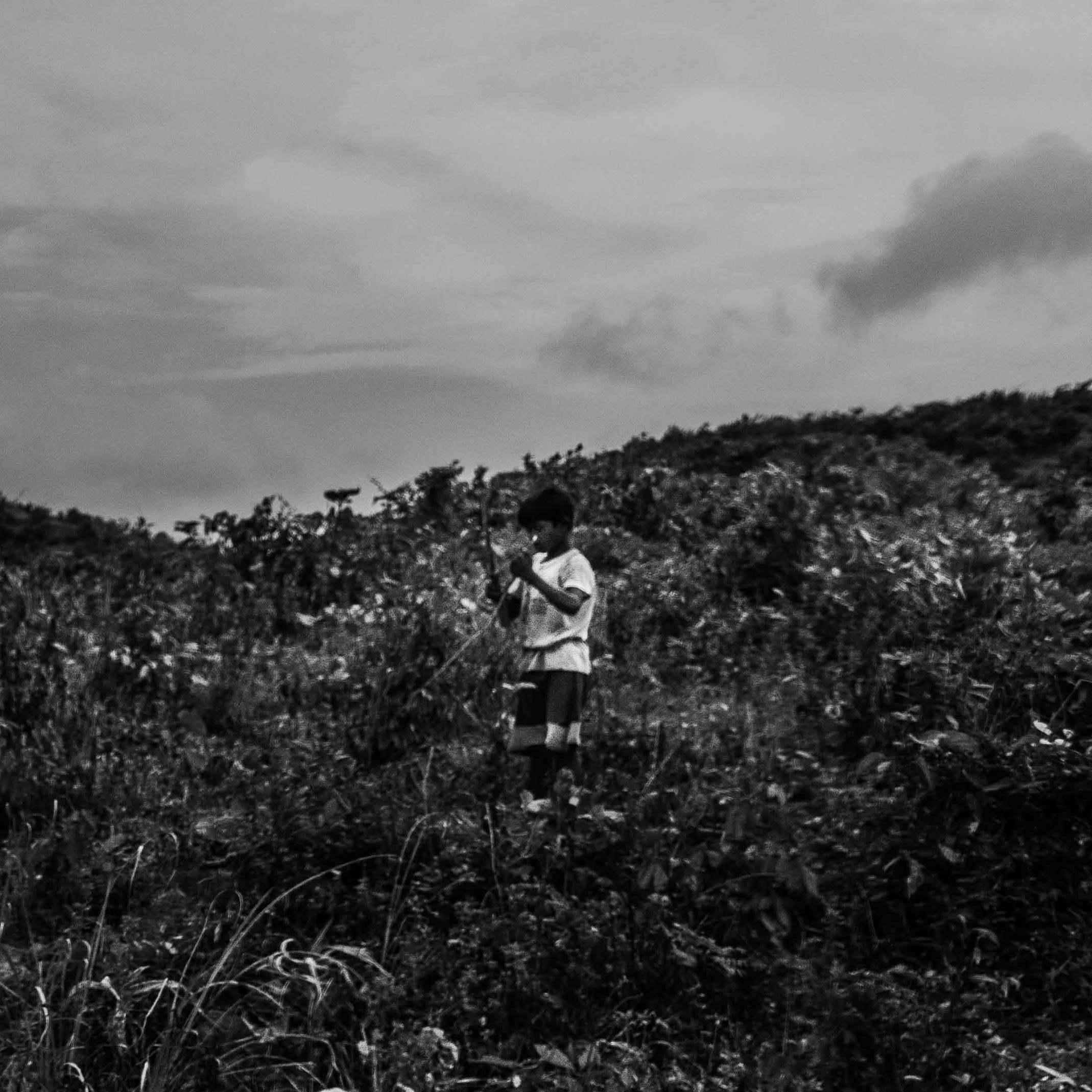
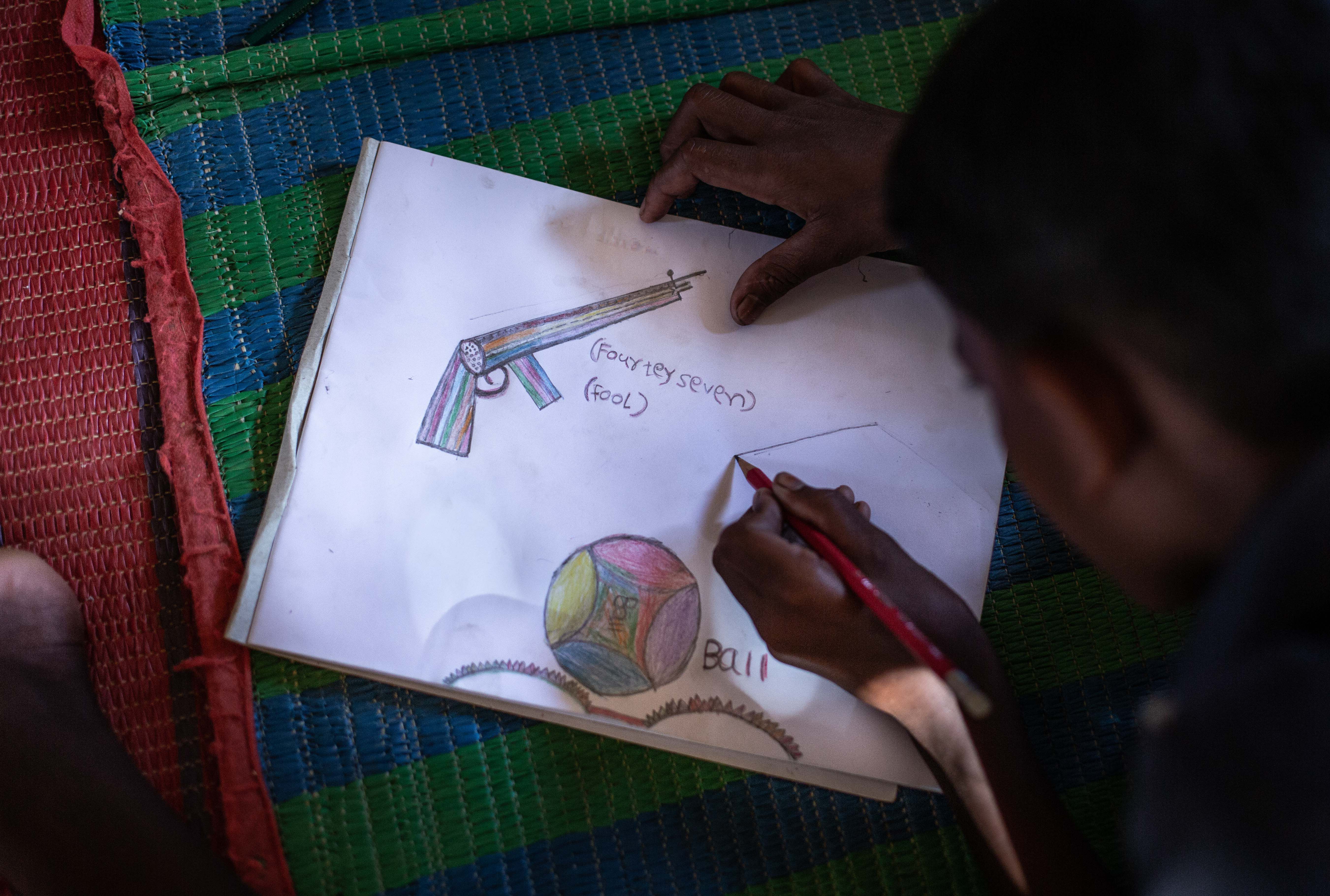
A young Rohingya boy (name redacted and blurred for safety) draws an AK-47 as part of his envisioned future.
“When I grow up, I want to take this gun to Myanmar and fight.” Balukhali refugee camp, on August 10, 2018.

A group of Rohingya kids play football beneath Balukhali refugee camp’s elevated main road
on August 8, 2018 in Cox's Bazar district, Bangladesh.
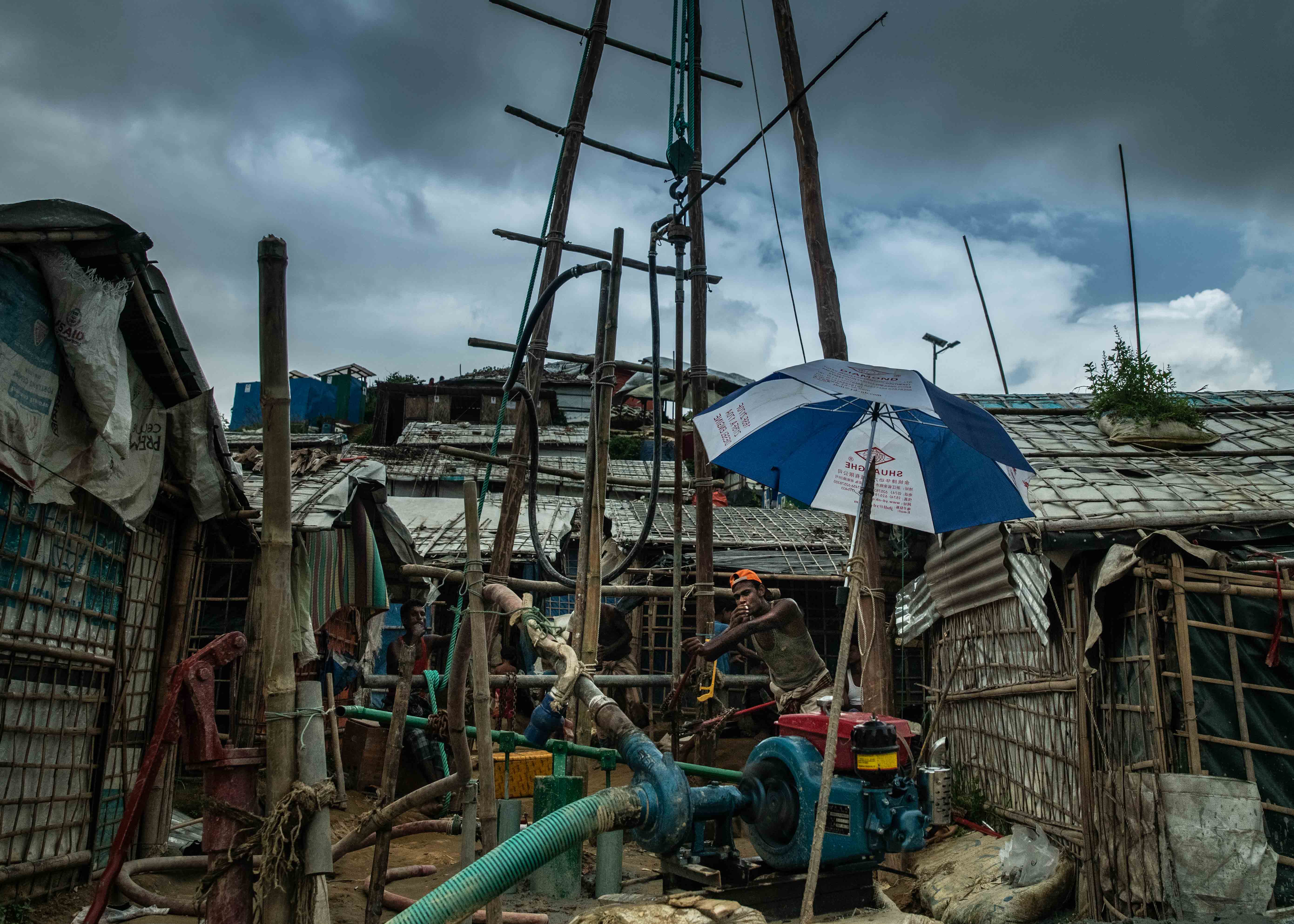
A Rohingya man manually drills a tube well in Balukhali refugee camp on August 8, 2018. Tube wells are the Rohingya’s main water sources and must be drilled to a depth of at least 150 meters in order to reach uncontaminated water. With daily usage by nearly 700,000 refugees, tube wells routinely break or dry up, creating a constant need for new water sources.
Rohingya children carry firewood back to Kutupalong refugee camp.

